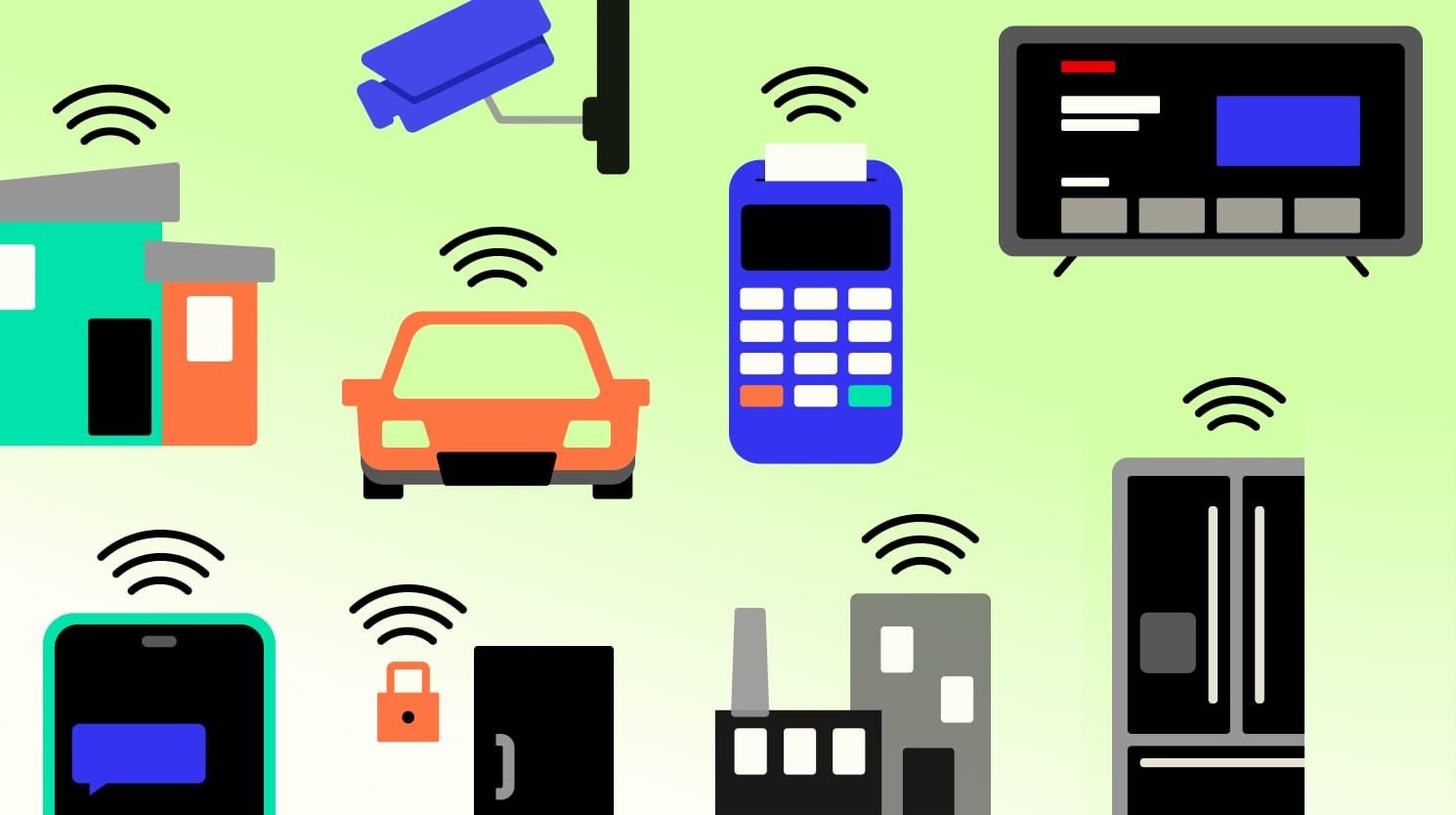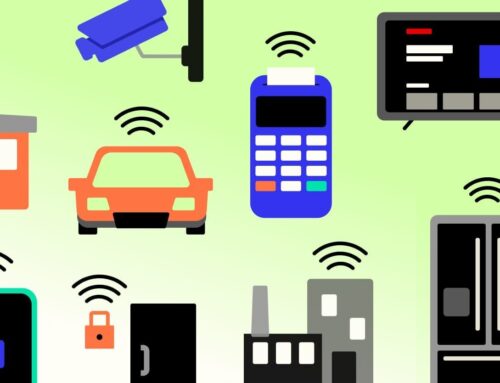Introduction
The Internet of Things (IoT) is reshaping the way we interact with technology, connecting a broad spectrum of devices—from smart home gadgets to medical devices and industrial equipment. While these devices bring convenience and efficiency, their widespread use introduces significant cybersecurity risks. Traditional approaches to cybersecurity often focus on securing systems after deployment, which can be inadequate for the IoT landscape. This article explores why embedding security by design in IoT is essential, and how Zero Trust Architecture (ZTA) can be integrated to mitigate risks from the outset and ensure robust, scalable security.
Understanding IoT Vulnerabilities
IoT devices have multiple vulnerabilities that make them attractive targets for cybercriminals, such as:
-
Lack of Security Standards:
Many IoT devices are designed with convenience and functionality in mind, often neglecting security. The absence of standardized security protocols across manufacturers and industries leaves devices open to attacks.
-
Limited Computing Resources:
Many IoT devices have constrained processing power, making it difficult to implement traditional security measures.
-
Default Credentials:
Devices often come with default usernames and passwords, which, if not changed, make them easily exploitable.
-
Limited Software Updates:
Many IoT devices do not support easy, regular updates, leaving them vulnerable to known exploits.
-
Interconnectedness:
The interconnected nature of IoT devices means a breach in one device can potentially compromise an entire network.
Why Security by Design is Crucial for IoT
Security by design involves integrating security features into the development process, ensuring that IoT devices are secure from the outset. By embedding security from the beginning, IoT manufacturers can significantly reduce the risk of vulnerabilities and make it easier to manage security at scale.
Zero Trust Architecture (ZTA) is a natural fit for this approach. ZTA operates under the assumption that no device or user is inherently trustworthy. It requires continuous validation of both the identity and security posture of every device in the network, no matter where it is located.
An interesting perspective on Zero Trust Architecture (ZTA) is to view it not just as a security model, but as a philosophical shift in how we approach trust and access control within digital environments. Traditionally, security models were built around a “castle-and-moat” mentality: once you’re inside the trusted perimeter, you have access to everything. Zero Trust, however, challenges this assumption by assuming that no user, device, or system is implicitly trustworthy, whether inside or outside the network perimeter.
Addressing the Massive Attack Surface in IoT
The scale of IoT deployment is staggering, and each connected device represents a potential entry point for attackers, and unlike traditional IT systems, IoT devices often lack the processing power to implement traditional security protocols. Designing security into the device from the beginning—such as by embedding secure boot processes, cryptographic keys, and secure communication protocols—helps ensure that each device is protected against unauthorized access, even with limited resources.
Zero Trust’s core principle of “never trust, always verify” can also be directly applied to IoT security. Instead of assuming that devices inside the network are trustworthy, Zero Trust requires continuous validation of both the identity and security posture of every IoT device, regardless of its location within the network. This ensures that even if one device is compromised, the attack is contained and cannot easily spread to other devices or systems.
For example, a smart thermostat in a home network may seem innocuous, but in a Zero Trust model, it would need to continuously authenticate and verify its behavior before being allowed access to other devices in the larger system, such as security cameras or voice assistants. This minimizes the attack surface by enforcing strict, continuous access controls.
Proactive Updates and Patchability for IoT Devices
Many IoT devices are vulnerable because they cannot easily be updated or patched once deployed. Security by design requires IoT devices to be built with mechanisms that support easy, remote updates. This ensures that as vulnerabilities are discovered, devices can be patched swiftly to mitigate risks. For instance, designing devices with over-the-air (OTA) update capabilities makes it easier to deploy security patches across large fleets of devices, ensuring they stay secure throughout their lifecycle.
Zero Trust enhances this process by supporting micro-segmentation. With this, IoT devices are isolated into smaller security zones. This isolation prevents vulnerabilities in one device from spreading to others. It also allows for updates to be applied in a controlled manner, reducing the risk of widespread exploitation.
Safeguarding Privacy and Data Integrity in IoT
Many IoT devices collect and handle sensitive data. Devices designed with security by design can encrypt data at rest and in transit. This encryption prevents unauthorized access or interception of sensitive information. Additionally, anonymization techniques can further safeguard privacy by reducing the risk of exposing personal data during a breach.
Zero Trust can be extended to enforce data integrity checks. If an IoT device is compromised and begins transmitting altered data, it can be detected and isolated immediately, preventing the spread of corrupted information or loss of data integrity across the network.
Scalable Security Solutions for IoT Ecosystems
As the IoT ecosystem grows, managing security across billions of devices becomes a daunting task. Designing devices with security in mind can streamline this process by integrating machine learning and artificial intelligence capabilities that allow devices to self-monitor, detect anomalies, and autonomously respond to threats. Furthermore, incorporating scalable security frameworks enables organizations to manage large-scale IoT networks more effectively, without relying on manual intervention.
Zero Trust also provides a scalable security framework that adapts to the size and complexity of an IoT ecosystem. Machine learning and AI-driven security tools integrated into Zero Trust models can automatically analyze device behavior and network traffic for anomalies, like authentication, monitoring, and policy enforcement. If any unusual behavior is detected, such as an IoT device attempting to communicate with unauthorized systems or accessing sensitive data, the device can be isolated or flagged for further investigation in real time.
Common IoT Threats and Mitigations
While security by design helps address foundational vulnerabilities, it’s important to understand the types of threats that IoT devices face:
-
Botnets:
IoT devices can be hijacked and used in DDoS attacks. By embedding security at the design phase, such as through authentication protocols and traffic monitoring, devices can be hardened against becoming part of a botnet. Zero Trust’s continuous authentication ensures that devices are properly verified before they can interact with other systems, reducing the risk of IoT devices being co-opted into botnets.
-
Data Breaches:
IoT devices collect valuable personal and corporate data. By implementing end-to-end encryption, secure data storage, and access controls during the design phase, data breaches can be prevented. By enforcing strict end-to-end encryption, access controls, and least privilege policies, Zero Trust minimizes the risk of data breaches, even if an attacker compromises an IoT device.
-
Ransomware:
IoT devices can be infected with ransomware that locks users out of their devices or data. Encryption and secure recovery mechanisms built into the device’s design can help mitigate the impact of a ransomware attack. Zero Trust can help prevent the spread of ransomware by isolating compromised devices and limiting their access to critical systems, stopping ransomware from encrypting more devices or data.
-
Physical Attacks:
Physical tampering with devices can compromise their security. Tamper-evident hardware and secure storage for sensitive data help protect against these kinds of attacks. Devices in a Zero Trust framework are also configured to detect any unauthorized physical interactions.
-
Eavesdropping:
Unprotected communications can be intercepted, allowing attackers to eavesdrop on sensitive information. Secure communication protocols, such as TLS and SSL, can be integrated into the device’s design to ensure that data remains confidential. Zero Trust ensures that communication between devices is always encrypted and authenticated, preventing unauthorized parties from intercepting sensitive data.
Best Practices for IoT Security by Design with Zero Trust
To ensure that IoT devices are secure from the ground up, manufacturers and developers should follow these best practices:
-
Secure Boot and Device Authentication:
Devices should only run trusted software from the moment they are powered on, ensuring that no malicious code is executed. IoT devices should require secure boot processes and strong authentication mechanisms, such as certificates or biometric verification, before any network access is granted.
-
Strong Authentication and Authorization:
Default passwords should be avoided, and devices should require strong authentication methods, such as multi-factor authentication (MFA), to ensure only authorized users can access them.
-
Continuous Monitoring and Threat Detection:
Devices should be equipped with the ability to detect unusual behavior or potential security incidents in real-time, and they should be able to report these anomalies back to a central monitoring system. Anomaly detection systems can alert administrators if a device exhibits abnormal behavior, enabling rapid intervention.
-
Micro-Segmentation:
Segment IoT devices into smaller, isolated security zones to limit the lateral movement of attacks. Zero Trust’s granular access control ensures that only authorized devices can communicate with each other.
-
Privacy by Design:
IoT devices should be designed with data minimization in mind, ensuring that only necessary data is collected and that it is stored and transmitted securely.
-
End-to-End Encryption:
All data, whether stored locally or transmitted across networks, should be encrypted to prevent unauthorized access. For example, all data transmitted between IoT devices and the cloud should be encrypted using strong encryption protocols to prevent eavesdropping and data manipulation.
-
Automated, Remote Updates:
Ensure that devices have built-in capabilities for remote, secure updates that can patch vulnerabilities as they arise. Zero Trust ensures that only trusted devices and authenticated update sources can push updates to the IoT network.
-
Least Privilege Access:
Apply least privilege principles by granting IoT devices and users only the minimum level of access necessary for their operation. This limits the damage in case a device is compromised.
Conclusion
Security by design is no longer a luxury in the IoT space—it’s a necessity. As the number of connected devices continues to skyrocket, embedding security into the very foundation of IoT devices ensures that they are resilient to the evolving landscape of cyber threats. By proactively addressing security concerns from the design phase, manufacturers can help create a safer, more reliable IoT ecosystem where devices, networks, and users are protected from the start. Incorporating Zero Trust Architecture (ZTA) into the design of IoT devices furthers a comprehensive security model that addresses the unique challenges of IoT ecosystems. Security by design, bolstered by Zero Trust principles, ensures that IoT devices are not only secure from the moment they are deployed but also remain resilient in the face of evolving cyber threats. By embedding Zero Trust into every stage of the IoT lifecycle— from development to deployment and management—organizations can build secure, scalable, and trustworthy IoT environments that minimize risk and maximize the benefits of connectivity.





